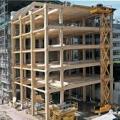North Coast timber - a compelling future opportunity
 Australia is poised to join similar countries around the world with proposed changes to the National Construction Code to allow timber construction in taller structures – up to 8 storeys, for buildings including apartments, hotels and offices.
Australia is poised to join similar countries around the world with proposed changes to the National Construction Code to allow timber construction in taller structures – up to 8 storeys, for buildings including apartments, hotels and offices.
Modelling indicates that this may result in construction cost reductions of 10-15%. The proposal is open for public consultation until Monday 3rd August and if successful will be implemented in May 2016. Tall Buildings
Over the past 2 years, Forest and Wood Products Australia Limited (FWPA) has been consulting with representatives from the timber, building and insurance industries, regulatory bodies and fire and emergency authorities during the development of a Proposal for Change to the National Construction Code Volume 1 (NCC).
Essentially, the proposal is to create a voluntary deemed-to-satisfy (DTS) solution for the NCC for the use of timber building systems in Class 2 (apartments), Class 3 (hotels) and Class 5 (office) buildings up to 25 metres in effective height (approximately 8 storeys).
Currently, timber building systems are restricted to 3 storeys under the National Construction Code’s DTS provisions with taller buildings requiring the design and documentation of an ‘alternative solution’ to gain approval. Alternative solutions, while practical on some larger projects, are generally found to be too costly for smaller constructions.
The proposed solution will cover both traditional timber framing and innovative massive timber systems (such as cross laminated timber or CLT, and Glulam) and comprises the use of appropriate layers of fire resistant plasterboard and sprinkler systems.
Preliminary economic modelling indicates potential savings in the order of 10-15% in multi–residential and commercial build costs, primarily due to shorter construction times. The modelling also suggests net benefits over 10 years of approximately A$103 million, comprising $98.2 million in direct construction cost savings, AU$3.8 million in reduced compliance costs; and A$1 million in environmental benefits.



